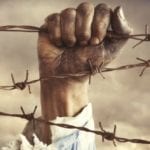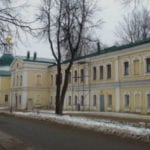 Weird Stuff
Weird Stuff  Weird Stuff
Weird Stuff  Mysteries
Mysteries 10 Tragic Disappearances and Deaths in Joshua Tree National Park
 History
History 10 Ways Childhood Really Sucked in the Old West
 Music
Music 10 Name Origins of Famous Bands from the 1990s
 Religion
Religion 10 Biggest Turnarounds by the Catholic Church
 Weird Stuff
Weird Stuff 10 Unbelievable Times Laws Had Unintended Consequences
 Humans
Humans Ten Historic Women Who Deserve Way More Credit Than They Got
 Movies and TV
Movies and TV 10 Films That Spawned Major Lawsuits
 History
History Ten Times Towns Were Wiped Off the Face of the Earth
 Creepy
Creepy 10 of the Most Disturbingly Haunted Public Houses in the UK
 Weird Stuff
Weird Stuff 10 Niche Subcultures That Are More Popular Than You Might Think
 Mysteries
Mysteries 10 Tragic Disappearances and Deaths in Joshua Tree National Park
 History
History 10 Ways Childhood Really Sucked in the Old West
Who's Behind Listverse?

Jamie Frater
Head Editor
Jamie founded Listverse due to an insatiable desire to share fascinating, obscure, and bizarre facts. He has been a guest speaker on numerous national radio and television stations and is a five time published author.
More About Us Music
Music 10 Name Origins of Famous Bands from the 1990s
 Religion
Religion 10 Biggest Turnarounds by the Catholic Church
 Weird Stuff
Weird Stuff 10 Unbelievable Times Laws Had Unintended Consequences
 Humans
Humans Ten Historic Women Who Deserve Way More Credit Than They Got
 Movies and TV
Movies and TV 10 Films That Spawned Major Lawsuits
 History
History Ten Times Towns Were Wiped Off the Face of the Earth
 Creepy
Creepy 10 of the Most Disturbingly Haunted Public Houses in the UK
10 Secret Prisons Governments Are Hiding From Us
Several governments and intelligence agencies are operating secret prisons. The fact that these facilities do not officially exist means they are well-protected from the prying eyes of human rights agencies and the courts. Torture is often the norm in these places, and detainees are kept in inhumane living conditions.
Various world governments don’t want you to know about the following secret prisons. Some were closed down before or after they were exposed, while others remain unconfirmed, with the governments in question denying their existence.
10 Salt Pit
Afghanistan
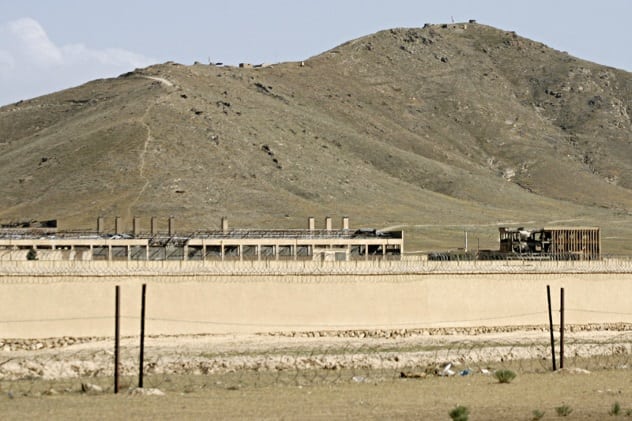
The Salt Pit is a secret CIA-run prison in Afghanistan. It is one of the several prisons set up by the CIA after the 9/11 attacks and was intended to hold people suspected of having links with terrorists. Torture was par for the course at the Salt Pit, and prisoners were often subjected to inhumane punishments and conditions, including mock executions.
The Salt Pit used to be a brick factory before it was turned into a black site. Its cells are small and without windows or toilets. All that the prisoners have to relieve themselves is a bucket. Inmates are stripped naked and made to sleep on cold concrete floors. CIA operatives always keep loud music playing as a form of psychological torture.
Dr. Ghairat Baheer, who was held at the prison for six months, revealed that CIA interrogators tied him to a chair and sat on his stomach. Another, Gul Rahman, who later died in custody and remains the only verified death at the prison, experienced more violent punishments. He was stripped naked with his hands chained over his head while he was repeatedly beaten and drenched with buckets of water.
Rahman died of hypothermia on the morning of November 20, 2002. He was half-naked. The CIA did not return his body to his family or inform them of his death.[1]
9 Camp 7
Guantanamo Bay
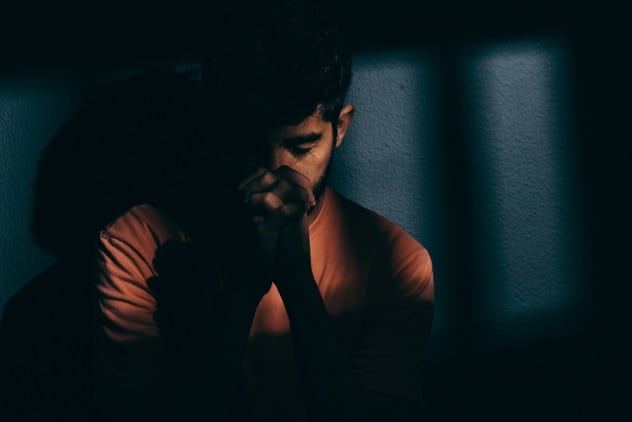
While the prison at Guantanamo Bay is already infamous and controversial in its own right, it also has its own secret prisons, which are even more controversial. One such place is Camp 7, which was built in a hidden location, away from the main prison. Camp 7 was so carefully hidden that no one knew of its existence for two years after it opened in 2006. The few who did never talked about it.
When its existence was revealed, journalists were not allowed to visit. The Red Cross was allowed in, on the condition that it never publicly speak about what it saw. Camp 7 was home to 15 prisoners the CIA considered “high value detainees.” One was Khalid Sheik Mohammed, who is fingered as the mastermind of the September 11 attacks.
The CIA has been accused of torturing prisoners at Camp 7. During a tribunal hearing, one of its inmates, Ramzi Bin al Shibh, complained that his cell always vibrated and made some strange noises. The US military denied all accusations of psychological torture and claimed Shibh was just hearing things.
In 2014, Pentagon confessed that Shibh was hearing real noises but said it was the result of the prison falling apart. It claimed Camp 7 was originally constructed as a temporary structure and asked Congress for $49 million and $69 million to work on its drainage and foundation. Congress refused to allocate the funds.[2]
8 Penny Lane
Guantanamo Bay
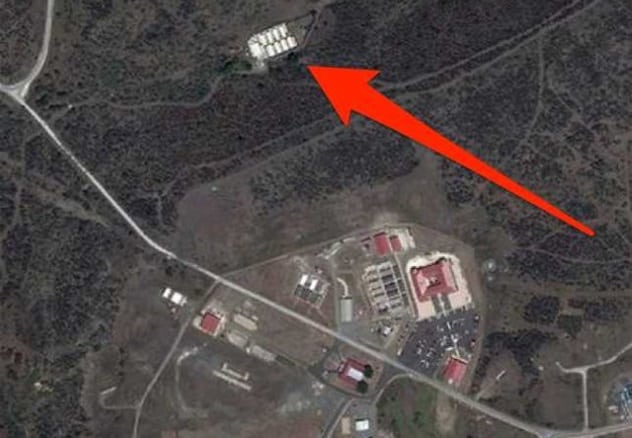
Penny Lane was another secret prison at Guantanamo Bay. Opened in 2003, the prisoners held there enjoyed a life of luxury. They lived in cottages, complete with a very comfortable bed, kitchen, patio, shower, and television. They could also request for additional luxuries, including pornography.
The fact that the inmates held in Penny Lane enjoyed a life of luxury shouldn’t be very surprising. The place was exclusively reserved for confirmed terrorists undergoing training as double agents. After their training, they were released and allowed to return to their terrorist cells, where they sent inside information back to the CIA.
This information was used to prepare drone strikes against targets of interest. In exchange, the CIA gave the terrorists millions of dollars in payment. The program was not a total success. Some of the terrorists rejoined their cells and never reported back to the CIA.
Some also became unwilling double agents after the CIA threatened to harm their children. Al-Qaeda itself knew the CIA would attempt to turn some of its people taken prisoner into double agents and had reservations about members released from Guantanamo Bay. The double agent program ended in 2006.[3]
7 The Resort
North Korea
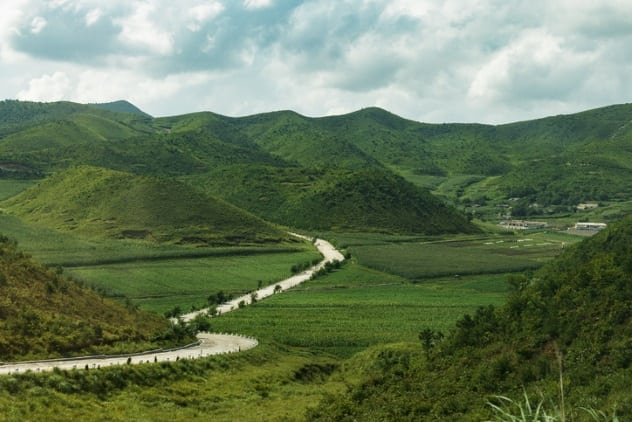
The Resort is the Penny Lane of North Korea. Its inmates are not terrorists but blacklisted relatives and officials of the North Korean oligarchy. It is not located on a remote island, either, but close to a town called Hyanghari, just 50 kilometers (30 mi) away from the Chinese border.
The Resort is believed to hold around 1,000 people. It has so many inmates because prisoners will often move in with their families. While heavily guarded, it does not look like a prison but more like a small town. Prisoners do not attempt to escape, since the living conditions aren’t bad. They don’t perform any hard labor or endure any additional punishment and get free cooked meals everyday.
Kim Song Ae is one of the people suspected of being held at the Resort. She used to be the second wife of the late president, Kim Il Sung. Another suspected prisoner is an aunt of the current president, Kim Jong Un. She is the wife of Jang Song Taek and was taken to the Resort after her husband was executed in December 2013.[4]
6 Cat’s Eye
Thailand
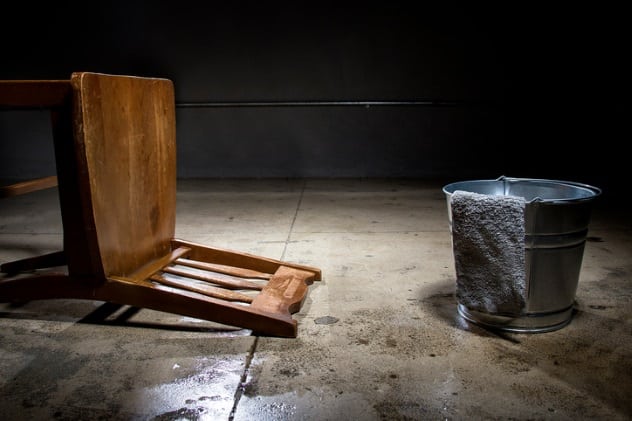
Also called Detention Site Green, Cat’s Eye was a secret CIA prison in Thailand. For all we know, the site could still be in operation, since no one knows its precise location. Some say it is outside Bangkok, while others say it’s in Udon Thani. However, all agree that it is in Thailand, even though the CIA and the Thai government deny its existence.
Cat’s Eye was exposed in a 2014 US Senate report in which its location was listed as “Country [REDACTED].”
The prison was hurriedly set up in 2002 to hold Abu Zubaydah, a mujahideen fighter suspected to be one of bin Laden’s henchmen. Abu was picked up in Pakistan in March 2002, and the CIA was confused on where to keep him. They wanted a place far away from US jurisdiction and the Red Cross.
Abu was heavily tortured at the prison. For several months, he was the only inmate held there, and his torturers had lots of time to spare with him. He lived inside a box that was no bigger than a coffin and was continuously waterboarded until he fainted. The CIA used him to test out several of their “enhanced interrogation techniques,” which is just a fancy name for torture.
Cat’s Eye’s second prisoner was Abd al Rahim al-Nashiri, who arrived there in November 2002. Both prisoners were frequently slapped, stripped naked, and deprived of sleep. They were also slammed against walls in an aptly named punishment called “walling.” Cat’s Eye was reportedly shut down in December 2002, after the CIA moved the inmates to another black site in Poland.[5]
5 Temara Interrogation Center
Morocco
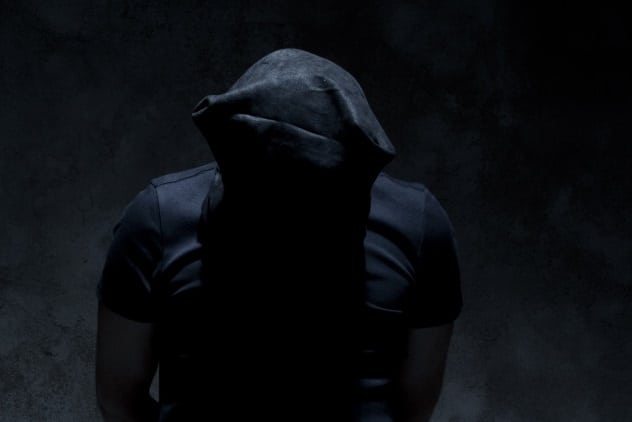
The Temara interrogation center was a secret prison jointly operated by the CIA and the Moroccan government. Located in Temara, near Rabat, the facility originally opened as a CIA-run secret interrogation center following the September 11 attacks. However, the CIA soon turned it into a prison. The Moroccan government joined in but was more interested in detaining political prisoners.
Zakaria Moumni, a French-Moroccan citizen who was held there for four days for political reasons, said his Moroccan interrogators told him he was in a slaughterhouse and would leave in pieces. Another, Oussama Boutahar, who fought with a Bosnia-based Islamist militia group in the 1990s and in 2003, said the Moroccans told him they were torturing him because the Americans told them to.
A report by the US Senate revealed that the CIA knew Morocco was torturing prisoners at the facility. The CIA complained to the Moroccan intelligence agency, but the complaint only destroyed the relationship between the CIA and the Moroccan government. The CIA also planned on abandoning the Temara site for another prison but later changed its mind. Morocco denies all accusations of torture.[6]
4 Camp Lemonnier
Djibouti

Djibouti is a small country. It is located in the Horn of Africa alongside several other nations, including the Al-Shabbab- and pirate-ridden Somalia. It is also close to Yemen, which is presently experiencing a disastrous civil war.
The strategic location of the small nation is the reason the US established a military base on its soil. From the base, called Camp Lemonnier, the US launches drone strikes against targets in Somalia and Yemen.
There are also unconfirmed claims that the CIA operates a secret prison at the base. The US Congress reportedly has information about the existence of this facility but has refused to declassify it. Congress is also said to be aware that some of the prisoners held there are innocent.
Mohammed Abdullah Saleh Asad was one of the inmates supposedly held at the prison. He said he was tortured there before he was transferred to another black site in Afghanistan, where he was also tortured.
Mahdi Hashi, another supposed former prisoner, said he was taken to the prison after he was kidnapped by CIA agents in Mogadishu, Somalia. He claimed he was arrested because he refused to spy for British intelligence.[7]
3 Unnamed Gay Prisons
Chechnya

Chechnya is a Muslim-majority autonomous region of Russia. It has been involved in series of wars with Russia in an attempt to become an independent nation. To end the recurring wars, Russia granted it autonomy. Today, Chechnya has its own head of state, Ramzan Kadyrov, who Russia leaves to do as he wishes.
Kadyrov has been accused of running secret prisons where gay men are tortured to death. Russia and Chechnya do not tolerate gays. While Russia has introduced laws to keep gays in check, Chechnya prefers abducting them and keeping them in secret detention centers where they are repeatedly tortured, sometimes to death.
Some journalists who reported the existence of the secret prisons in Chechnya have been murdered. Novaya Gazeta, the first paper to report the kidnappings, detentions, and killings, has seen at least six of its journalists killed. Some of its living journalists are still being threatened, and others have even fled the country.[8]
2 Unnamed Prisons
Ukraine
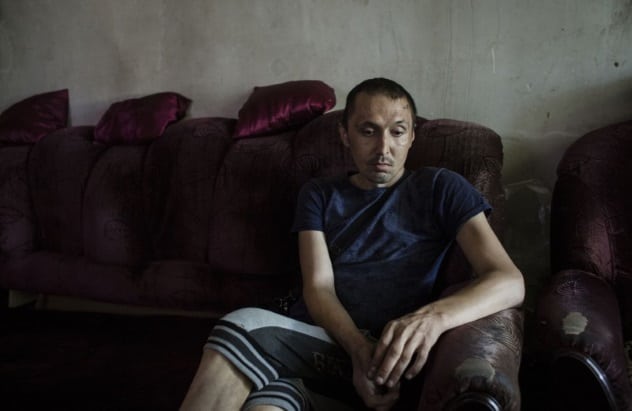
Between 2014 and 2016, the Security Service of Ukraine (SBU) operated a secret prison in Kharkiv. The site was used to hold people the agency suspected of supporting or sympathizing with Russia during that nation’s military intervention in Ukraine and the consequent annexation of Crimea.
At the time, the SBU denied the existence of any secret prison and dismissed the accusation as Russian propaganda. The SBU and Ukrainian military launched independent probes into the existence of the facilities, but both closed their investigations without reaching a conclusion.
Mykola Vakaruk was held at the secret prison for about 600 days, during which he was repeatedly tortured. When he arrived, one of his interrogators told him he would receive a blow to the chest for every incorrect answer he gave.
Vakaruk received repeated blows and was kept in a 2-square-meter (22 ft2) cell which was so cold that water turned to ice. This culminated in him losing a kidney. He was taken to a hospital, where he underwent surgery to remove the damaged kidney before he was returned to the prison. He said he was forced to confess that he supported the Russian-backed fighters.
Vakaruk was let go when Ukraine started a mass release of the prisoners due to pressure by human rights groups. He received a paltry 100 hryvnias ($3.80) as compensation, and he and other detainees were threatened never to disclose their experiences to anyone.
The secret prison in Kharkiv was one of the several clandestine facilities operated by the SBU. Amnesty International and the Human Rights Watch accused the agency of maintaining other secret prisons in Kramatorsk, Izium, and Mariupol. The Russian-backed fighters were also accused of operating secret detention centers.[9]
1 Black Jails
China
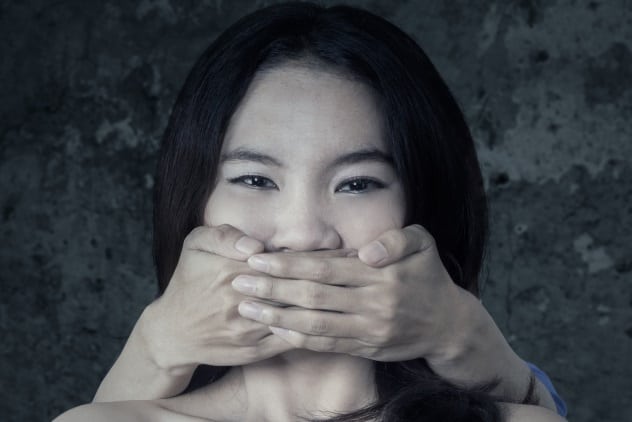
The black jails are independent secret prisons illegally operated by various Chinese provinces and local governments. Because of the governmental structure in China, citizens are expected to report any grievance to their local and provincial governments.
If they do not get justice, they are allowed to report to the central government at Beijing. The central government itself uses the number of reports it receives to determine the effectiveness of the local and provincial governments.
To avoid getting into Beijing’s black books, the local and provincial governments employed over 10,000 people to hunt, kidnap, detain, and torture citizens who travel to Beijing to make reports. The prisons are usually unoccupied homes, psychiatric wards, and guesthouses.
In 2009, it was suspected that the provinces operated 73 black jails inside Beijing. The central government initially denied the existence of the black jails but later confirmed that they were real.[10]
Read about more secretive locations on 10 Secret CIA Prisons You Do Not Want To Visit and 10 Russian ‘Closed Cities’ That Still Exist.


